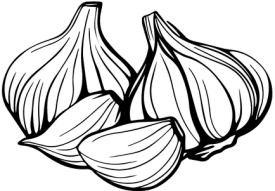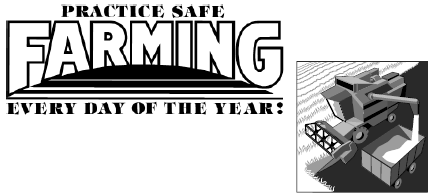

To send a message to an author, click on the author's name at the end of the article.
This Month in Ag Connection | Ag Connection - Other Issues Online
After fall harvest is the ideal time for soil sampling and testing. This provides enough time to plan fertilizer and lime applications for the coming year. It is recommended to wait at least three months after application of fertilizer, lime, or manure before taking a soil sample. This is another reason for collecting soil samples from row crop fields in the fall. Collect soil samples at the same time of year as last sampling because some soil test levels, such as potassium, fluctuate during the year.
Soil testing provides a baseline for fertilizer application. The soil test report provides information about which nutrient(s) and how much needs to be applied to achieve the expected yield goal. It is recommended to test soil every three to five years.
Soil sampling technique is very important. Care must be taken to collect a representative sample from the field. In a 20-acre field, there is about 40 million pounds of soil in the top six inches, yet only one pound of soil is collected and sent to the lab for testing. Generally, from a 20-acre field which has similar soil properties, management and slope, colleting 15-20 cores is sufficient for one composite sample. Separate soil samples should be collected from the field if there is variation in terms of soil properties, management, and slope.
During collection, sample at a six to seven inches depth from the surface. Coring devices such as a soil sampler or auger, are good tools. After collecting random cores in a bucket, crumble the soil into small pieces and mix well. Remove rocks, grass, and debris; place about a pint of soil in a sample box or zipper top bag. Discard the excess soil and label the sample for identification.
University of Missouri has a soil and plant testing lab in Columbia. Soil samples can be submitted directly to the MU soil testing lab or to a local county extension center. Private soil testing labs are another option. Make sure to have soil tested at an accredited lab. At submission, information should be provided about field condition, cropping history, previous soil test information or lime application, irrigation status, crop rotation and the expected crop to be planted. There are different types of soil testing packages available. Most of the time a basic test (phosphorus, potassium, calcium, magnesium, organic matter, pH, cation exchange capacity and neutralizable acidity) is sufficient. The soil testing lab provides a report with fertilizer and lime recommendation for the listed crops with their expected yield.
If you are interested to learn in detail about soil sampling, refer to this guidesheet published by MU Extension: Soil Sampling Hayfields and Row Crops which may be found at http://extension.missouri.edu/g9217 or a copy is available at your local county extension center.
Source: Dhruba Dhakal, Agronomy Specialist
This Month in Ag Connection | Ag Connection - Other Issues Online

Garlic (Allium sativum) is a member of the lily family and has been cultivated for thousands of years. It is widely used for both its culinary and medicinal attributes.
About one-half of U.S. garlic production is sold in the fresh market, the other half is dehydrated. Fall is the best time to plant garlic. It should be planted at least three weeks prior to the ground freezing, so the roots have a chance to develop.
Garlic should be planted in well-drained soil in full sun. It prefers soil high in organic matter, amend with compost or well-rotted organic matter, as needed. In addition, apply two to three pounds of 10-10-10 fertilizer per 100 square feet before planting. It is best to purchase garlic from garden centers, catalogs or local producers. The garlic sold in grocery stores is usually treated to prevent it from sprouting and is not a good choice for planting.
Garlic bulbs should be broken apart into individual cloves immediately before planting. Choose the largest cloves to get the best yields. Cloves that are diseased or soft should be discarded, and small or damaged cloves can be used in the kitchen. Plant cloves one to two inches deep and four to five inches apart with 15 to 18 inches between rows. Make sure to plant the cloves with the pointed side facing up.
During the growing season, keep the soil evenly moist. If the soil gets too dry, it can result in small, irregularly shaped bulbs. Garlic needs about an inch of water a week. Harvest when half of the leaves have turned yellow, usually around late June or early July. Bulbs should be cured in a cool, dry, well-ventilated area for several weeks. Once the garlic is cured, the stems and roots can be cut off. Clean bulbs by removing the outermost skin while being careful not to expose the cloves. Store in a cool, dry, dark place.
Source: Jennifer Schuter, Horticulture Specialist
This Month in Ag Connection | Ag Connection - Other Issues Online
Mark Your Calendar....
Missouri Livestock Symposium
Dec. 2 & 3
Kirksville, MO
https://missourilivestock.com/
This Month in Ag Connection | Ag Connection - Other Issues Online
Ornamentals
Lawns
Vegetables
Fruits
This Month in Ag Connection | Ag Connection - Other Issues Online
The September issue of NEMO Ag Connection included an article about the restructuring of the experiment station centers and named the new directors. This article focuses on the new director for the northern centers.
By: Michelle Enger (adapted to fit space)
Jeff Case is the new director of the Northern Missouri Research, Extension and Education Center (NM-REEC), effective May 2. The Northern Missouri REEC is one of the four research, Extension and education centers of the Missouri Agricultural Experiment Station (AES) in the University of Missouri College of Agriculture, Food and Natural Resources (CAFNR).
Case is vice president at Enterprise Bank and Trust, managing and building the agricultural lending portfolio throughout Missouri, Kansas and Iowa. He also served as state director and Midwest regional chairman for USDA Rural Development from 2017-2021 and has worked as vice president for both Rabo AgriFinance and FCS Financial. Case also has been an adult agricultural education instructor, coordinating joint education programs with the University of Missouri. USDA Rural Development focused on initiatives including rural broadband during his tenure as state director; he received the Excellence Award from the USDA undersecretary in 2020 and the Innovation Excellence Award in 2018.
"We are pleased to welcome Jeff to the Northern Missouri REEC as director," said Shibu Jose, CAFNR associate dean for research and director of the Missouri Agricultural Experiment Station. "His experience in agricultural leadership, education and research, as well as leadership in rural development will be a great fit for the Northern Missouri REEC and the Missouri Ag Experiment Station and its mission."
He is a two-time CAFNR alumnus with both his Bachelor and Master of Science in agricultural education from Mizzou. Case also received a Master of Business Administration from William Woods University. He also served in the United States Army.
"I believe in our land-grant mission of empowering people and strengthening our communities and I believe the REECs play a vital role in the application of research findings," Case said. "In this position, I am looking forward to having the opportunity to be a leader in fulfilling that mission and serving agriculture."
The NM-REEC encompasses three properties in northern Missouri: Cornett Farm in Linneus; Lee Greenley Jr. Memorial Farm in Novelty; and Thompson Farm in Spickard. Each has a unique focus and research programs. Case has been part of research projects at the Greenley Farm over the years.
"I plan for the NM-REEC team to expand and build on a culture of research and innovation; increase our research and Extension presence at the field labs; and develop strategic partnerships within industry, education, and the local community to foster innovation and entrepreneurship fitting with the University and CAFNR's strategic plan, 'Drive to Distinction,'" Case said.
He is a graduate of Agricultural Leadership of Tomorrow (ALOT) Class XII (2006-8) and recipient of the Outstanding Alumni Award in 2018 and Workhorse Award in 2009; and served as chairman of the Missouri Agriculture and Small Business Development Authority (MASBDA) from 2004-9 and was recognized for Outstanding Service to the group in 2010. Case is a lifetime member FFA Alumni, and as a school board member in La Plata, Missouri, from 2009-15, he was responsible for development of the La Plata R2 Agricultural Education program.
Case is also owner and operator of Case Farms, a hay and row-crop farm in northern Missouri.
This Month in Ag Connection | Ag Connection - Other Issues Online
A two-day conference for women livestock producers focusing on hands-on learning by women instructors.
Day 1 will begin at 1pm and include a tour of Brinker Farm's farrow to finish swine operation, presentation on direct marketing beef, and dinner. The night will end with socializing.
Day 2 focuses on hands-on activities. The day begins at 8 a.m. with breakout sessions throughout the day on the University of Missouri Campus. The session will include: Understanding the Meat on Your Plate, Calving and Calf Care, and Welding. The day concludes at 3:00 p.m.
For fee and registration information go to: https://tinyurl.com/MU-Pearls22 or call Elizabeth Picking 417-256-2391.

Publishing Information
Ag Connection is published monthly for Northeast and Central areas of Missouri producers and is supported by the University of Missouri Extension, the Missouri Agricultural Experiment Station, and the MU College of Agriculture, Food and Natural Resources. Managing Editor: Mary Sobba.